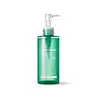What's inside
What's inside
 Key Ingredients
Key Ingredients

 Benefits
Benefits

 Concerns
Concerns

 Ingredients Side-by-side
Ingredients Side-by-side

Ethylhexyl Palmitate
EmollientGlycerin
HumectantPolyglyceryl-5 Dioleate
EmulsifyingTriethylhexanoin
MaskingWater
Skin ConditioningPolyglyceryl-6 Caprylate
EmulsifyingIsostearyl Alcohol
EmollientCitrus Aurantium Dulcis Peel Oil
MaskingCitrus Grandis Peel Oil
MaskingIsopropyl Lauroyl Sarcosinate
Skin ConditioningPropanediol
SolventButylene Glycol
HumectantCitrus Limon Peel Oil
MaskingArgania Spinosa Kernel Oil
EmollientOenothera Biennis Oil
EmollientButyl Avocadate
Skin ConditioningOlea Europaea Fruit Oil
MaskingSimmondsia Chinensis Seed Oil
EmollientVitis Vinifera Seed Oil
EmollientSesamum Indicum Seed Oil
EmollientCitrus Nobilis Peel Oil
MaskingTocopherol
AntioxidantOryza Sativa Bran Oil
EmollientAloe Barbadensis Leaf Extract
EmollientBioflavonoids
Skin ConditioningCitrus Aurantium Amara Flower Oil
MaskingCalendula Officinalis Flower Extract
MaskingBrassica Oleracea Italica Extract
AstringentCitrus Aurantium Dulcis Peel Extract
Emulsion StabilisingCitrus Limon Peel Extract
EmollientCitrus Nobilis Peel Extract
MaskingCitrus Paradisi Peel Extract
PerfumingPunica Granatum Pericarp Extract
Skin Conditioning10-Hydroxydecanoic Acid
Skin ConditioningSebacic Acid
Buffering1,10-Decanediol
SolventPropyl Gallate
AntioxidantAscorbyl Palmitate
AntioxidantLecithin
EmollientPhenoxyethanol
PreservativeLimonene
PerfumingEthylhexyl Palmitate, Glycerin, Polyglyceryl-5 Dioleate, Triethylhexanoin, Water, Polyglyceryl-6 Caprylate, Isostearyl Alcohol, Citrus Aurantium Dulcis Peel Oil, Citrus Grandis Peel Oil, Isopropyl Lauroyl Sarcosinate, Propanediol, Butylene Glycol, Citrus Limon Peel Oil, Argania Spinosa Kernel Oil, Oenothera Biennis Oil, Butyl Avocadate, Olea Europaea Fruit Oil, Simmondsia Chinensis Seed Oil, Vitis Vinifera Seed Oil, Sesamum Indicum Seed Oil, Citrus Nobilis Peel Oil, Tocopherol, Oryza Sativa Bran Oil, Aloe Barbadensis Leaf Extract, Bioflavonoids, Citrus Aurantium Amara Flower Oil, Calendula Officinalis Flower Extract, Brassica Oleracea Italica Extract, Citrus Aurantium Dulcis Peel Extract, Citrus Limon Peel Extract, Citrus Nobilis Peel Extract, Citrus Paradisi Peel Extract, Punica Granatum Pericarp Extract, 10-Hydroxydecanoic Acid, Sebacic Acid, 1,10-Decanediol, Propyl Gallate, Ascorbyl Palmitate, Lecithin, Phenoxyethanol, Limonene
Water
Skin ConditioningDipropylene Glycol
HumectantSorbeth-30 Tetraoleate
EmulsifyingIsopropyl Palmitate
EmollientEthylhexyl Pelargonate
EmollientGlycerin
HumectantC12-14 Pareth-12
EmulsifyingPentylene Glycol
Skin ConditioningPollen Extract
EmollientRosa Canina Fruit Oil
EmollientSimmondsia Chinensis Seed Oil
EmollientPolyglyceryl-10 Laurate
Skin ConditioningCitric Acid
BufferingDipotassium Glycyrrhizate
HumectantSodium Citrate
BufferingAllantoin
Skin ConditioningDisodium EDTA
Olea Europaea Oil Unsaponifiables
Skin ConditioningTriticum Vulgare Germ Oil Unsaponifiables
EmollientGlycine Soja Oil Unsaponifiables
EmollientButylene Glycol
HumectantLactobacillus
Skin ConditioningLeuconostoc/Radish Root Ferment Filtrate
AntimicrobialStreptococcus Thermophilus Ferment
HumectantBifida Ferment Lysate
Skin ConditioningFructooligosaccharides
HumectantParfum
MaskingHydroxyacetophenone
AntioxidantEthylhexylglycerin
Skin ConditioningWater, Dipropylene Glycol, Sorbeth-30 Tetraoleate, Isopropyl Palmitate, Ethylhexyl Pelargonate, Glycerin, C12-14 Pareth-12, Pentylene Glycol, Pollen Extract, Rosa Canina Fruit Oil, Simmondsia Chinensis Seed Oil, Polyglyceryl-10 Laurate, Citric Acid, Dipotassium Glycyrrhizate, Sodium Citrate, Allantoin, Disodium EDTA, Olea Europaea Oil Unsaponifiables, Triticum Vulgare Germ Oil Unsaponifiables, Glycine Soja Oil Unsaponifiables, Butylene Glycol, Lactobacillus, Leuconostoc/Radish Root Ferment Filtrate, Streptococcus Thermophilus Ferment, Bifida Ferment Lysate, Fructooligosaccharides, Parfum, Hydroxyacetophenone, Ethylhexylglycerin
Ingredients Explained
These ingredients are found in both products.
Ingredients higher up in an ingredient list are typically present in a larger amount.
Butylene Glycol (or BG) is used within cosmetic products for a few different reasons:
Overall, Butylene Glycol is a safe and well-rounded ingredient that works well with other ingredients.
Though this ingredient works well with most skin types, some people with sensitive skin may experience a reaction such as allergic rashes, closed comedones, or itchiness.
Learn more about Butylene GlycolGlycerin is already naturally found in your skin. It helps moisturize and protect your skin.
A study from 2016 found glycerin to be more effective as a humectant than AHAs and hyaluronic acid.
As a humectant, it helps the skin stay hydrated by pulling moisture to your skin. The low molecular weight of glycerin allows it to pull moisture into the deeper layers of your skin.
Hydrated skin improves your skin barrier; Your skin barrier helps protect against irritants and bacteria.
Glycerin has also been found to have antimicrobial and antiviral properties. Due to these properties, glycerin is often used in wound and burn treatments.
In cosmetics, glycerin is usually derived from plants such as soybean or palm. However, it can also be sourced from animals, such as tallow or animal fat.
This ingredient is organic, colorless, odorless, and non-toxic.
Glycerin is the name for this ingredient in American English. British English uses Glycerol/Glycerine.
Learn more about GlycerinThis oil comes from the seeds of the desert shrub called Jojoba. It is more commonly known as jojoba oil, a non-comedogenic oil.
Jojoba oil does not contain fragrance and has many fatty-acids, making it a great soothing ingredient.
It also contains Vitamin E, a great moisturizing ingredient. Vitamin E is also an antioxidant and protects your skin against oxidative damage.
This ingredient humectant properties, meaning it helps draw moisture from the air. This helps keep your skin hydrated.
While jojoba has antibacterial properties, it is only able to kill some strains of bacteria.
Studies also show it helps in wound healing. In fact, Indigenous cultures have used jojoba as a moisturizer and to help treat burns for centuries.
Fun fact: Jojoba oil similar to natural human skin sebum, so it has a great effect on dry skin. It is also promising with helping to regulate sebum production.
Due to its fatty acid content, Jojoba oil may not be fungal acne safe. We recommend speaking with a professional if you have any concerns.
Learn more about Simmondsia Chinensis Seed OilWater. It's the most common cosmetic ingredient of all. You'll usually see it at the top of ingredient lists, meaning that it makes up the largest part of the product.
So why is it so popular? Water most often acts as a solvent - this means that it helps dissolve other ingredients into the formulation.
You'll also recognize water as that liquid we all need to stay alive. If you see this, drink a glass of water. Stay hydrated!
Learn more about Water